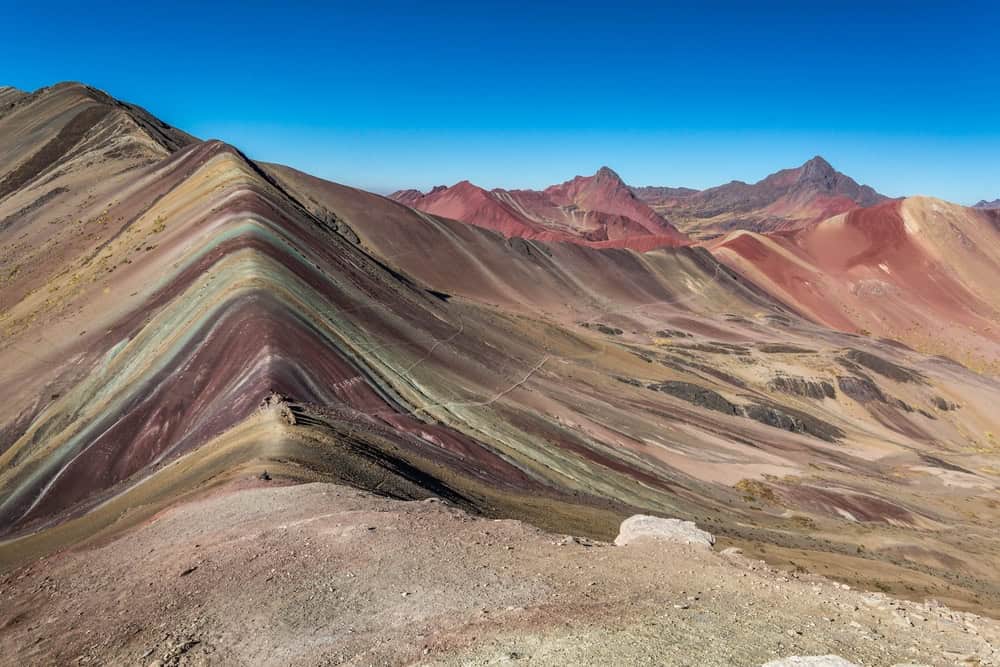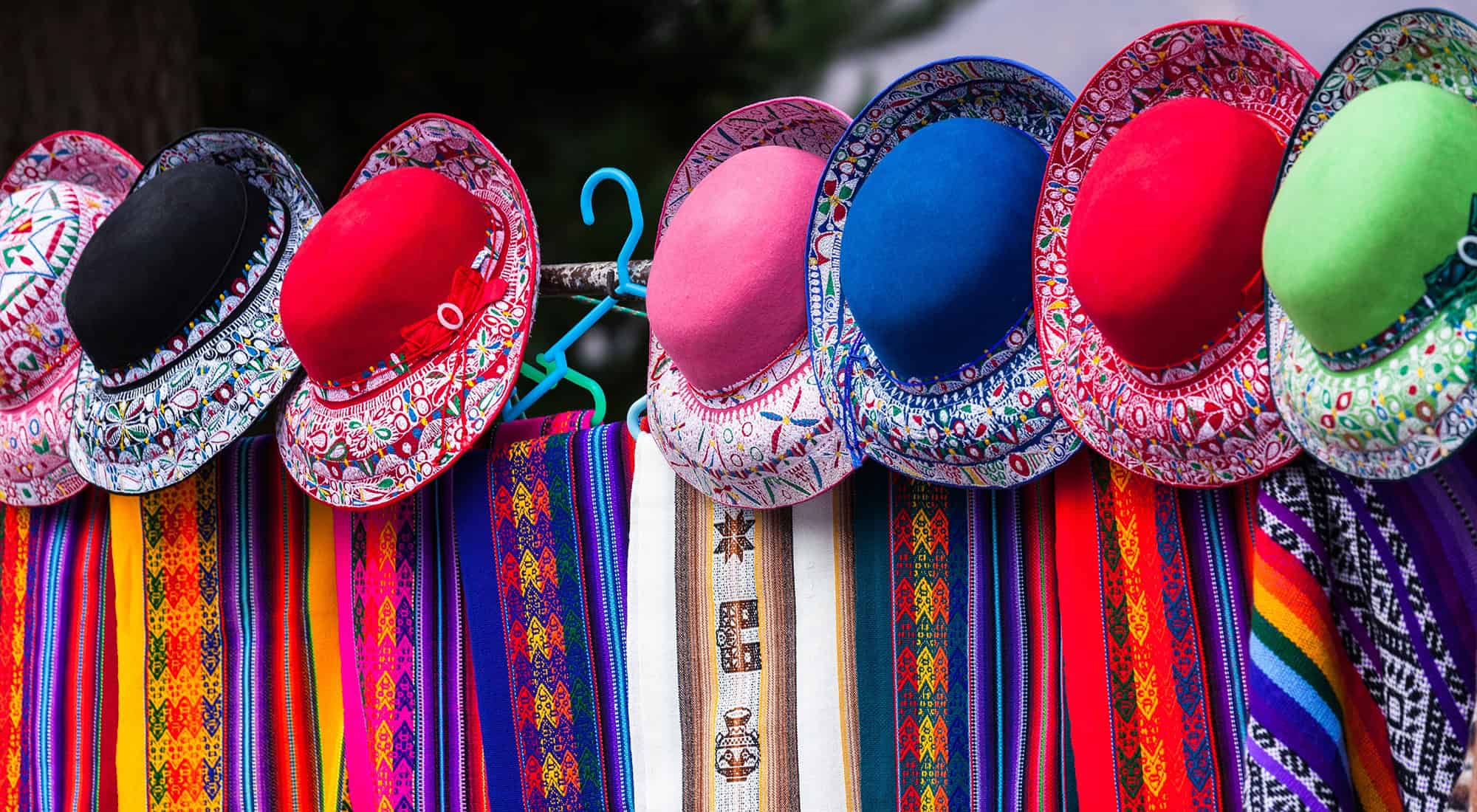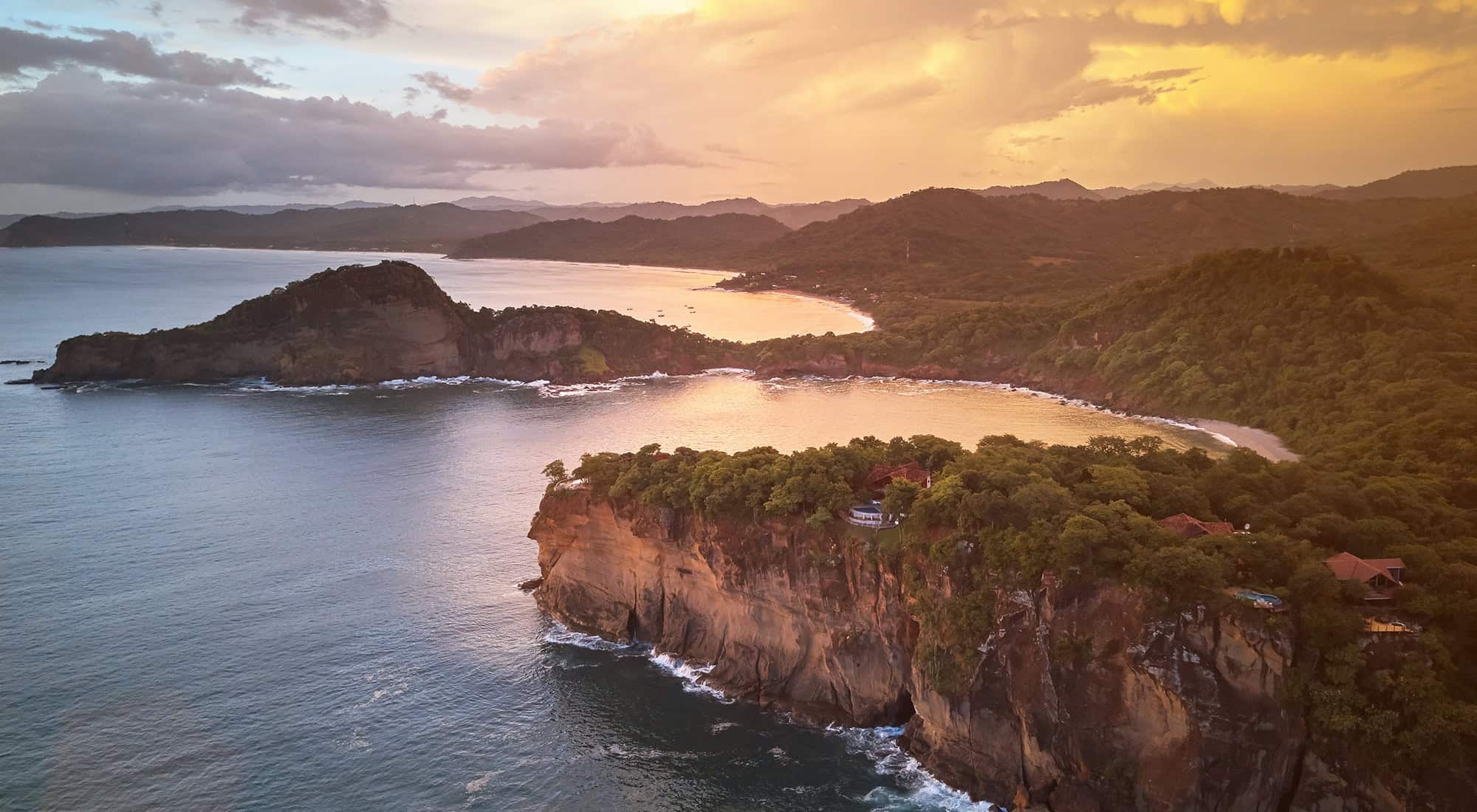Renowned for its incredible wealth of ancient archaeological sites (of which the fabled Inca city of Machu Picchu is the most famous), Peru is also home to many more unique experiences.
Thanks to an astounding array of natural diversity – ecosystems range from cloudforests to glacial lakes – Peru hosts a dizzying range of plants and animals, with species previously unknown to science recorded every year.
Grand colonial cities contrast with traditional villages, and fiestas offer an explosion of colour.
Underpinning all of this are the vast and varied landscapes of Peru, the third-largest country in South America: mountains, lush jungle, arid deserts and sun-soaked beaches. And one of Peru’s most eyecatching geological wonders takes centre stage as our cover star.
What’s on the cover?
The cover of our new Peru Handbook features mineral-layered ridges in the Cordilleras Vilcanota region of the Andes, where numerous strata of sediment exposed by weathering and erosion create a ‘rainbow’ effect in the mountainsides.
Where can I find it?
The mountains of Vilcanota are about 3 hours’ drive south of Cuzco, close to the revered Ausangate peak.
The most well-known multicoloured mountain is Vinicunca, which has been nicknamed ‘Rainbow Mountain’. Until recently, this remote spot was little visited, but over the past couple of years increasing numbers of tourists have climbed to this lofty spot to take photos of this most Instagrammable of landscapes.
Why should I visit?
Most visitors head to Rainbow Mountain to take photos of the kaleidoscopic, otherworldly landscape.
This recent surge of interest in Vinicunca has placed significant pressure on the area, both ecologically and socially, so if you plan to visit this spot, please try do so responsibly.
How?
If you are intent on visiting Vinicunca, book with a responsible tour agency such as Flashpacker or Apus Perú. Their smaller group tours with certified mountain guides minimise your impact on the site and prioritise visitor safety.
Though the hike isn’t technical (it’s about 5 miles/8km in total on a fairly good path), it is a physical challenge – the ridge lies at over 5,000m (Cuzco is a ‘mere’ 3,400m), and if you’re not acclimatised, the rapid ascent can cause headaches, breathlessness, nausea or more serious altitude sickness. It can also be very cold at the top, even in dry weather. So be sure that you are well equipped, well prepared and fully acclimatised before undertaking a visit. Two-day treks, including an overnight stay in a tent below the ridge, allow more time for acclimatisation and give the chance to start before the day-trip crowds from Cuzco arrive.
Vinicunca is not the only ‘rainbow mountain’ in the region, so consider visiting one of the alternatives instead. Aracari offer a trip to Palcoyo mountain that takes in these rainbow landscapes as well as other spectacular sights in the Vilcanota Valley.
For serious trekkers, a rewarding way to explore the region is on the Ausangate Circuit, taking in hot springs, glistening blue lakes, red valleys and the striking Ausangate peak – one of South America’s most dramatic treks.
When?
The dry season (May/June to September/October) is the best time to explore this region; the trails are safer (they can be very muddy and slippery when wet), and views are less often hampered by cloud and fog.
Other Instagrammable mountain vistas
Can’t get enough of glorious mountain backdrops? Here are some of our favourite photogenic mountain vistas from around the globe:















